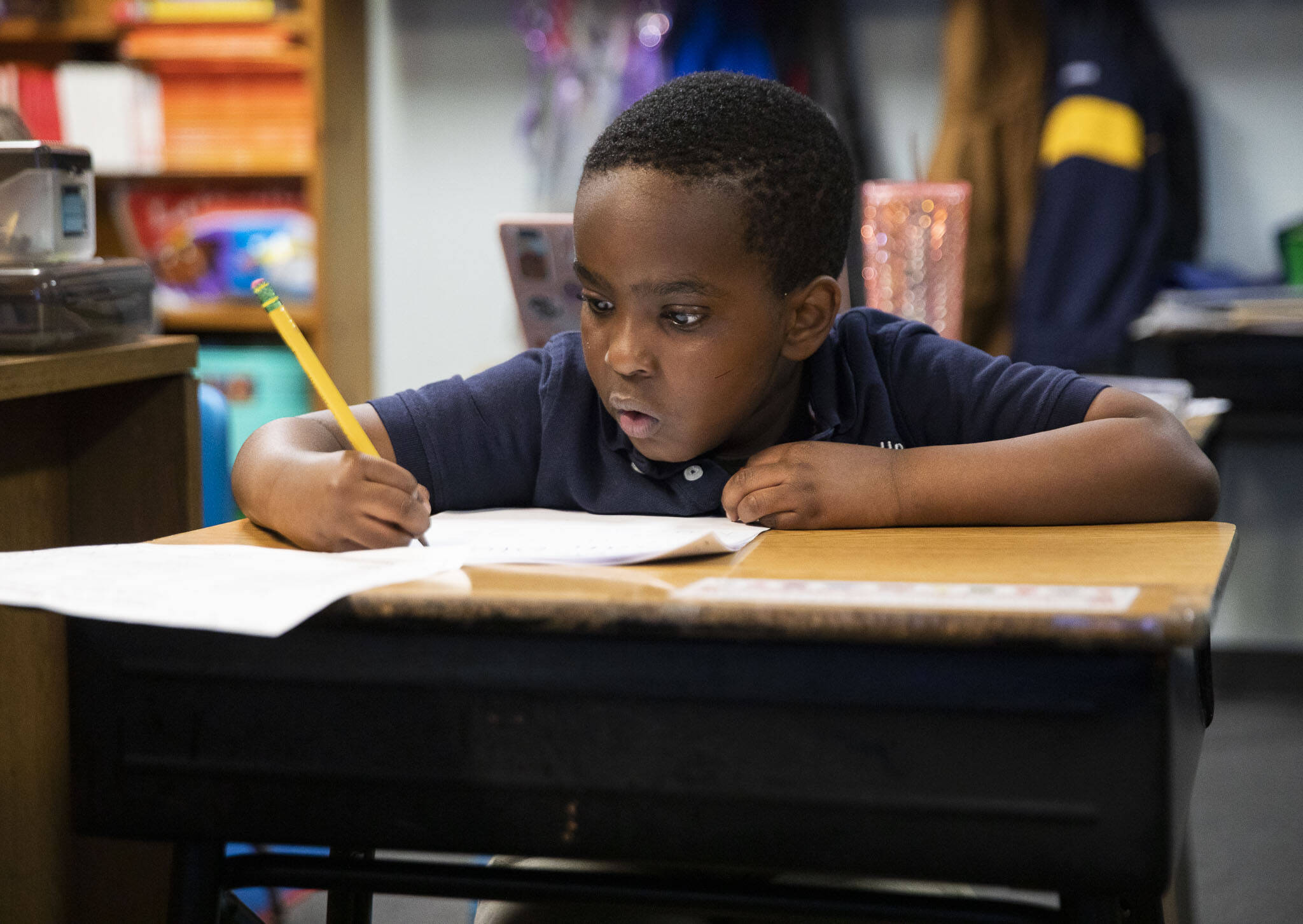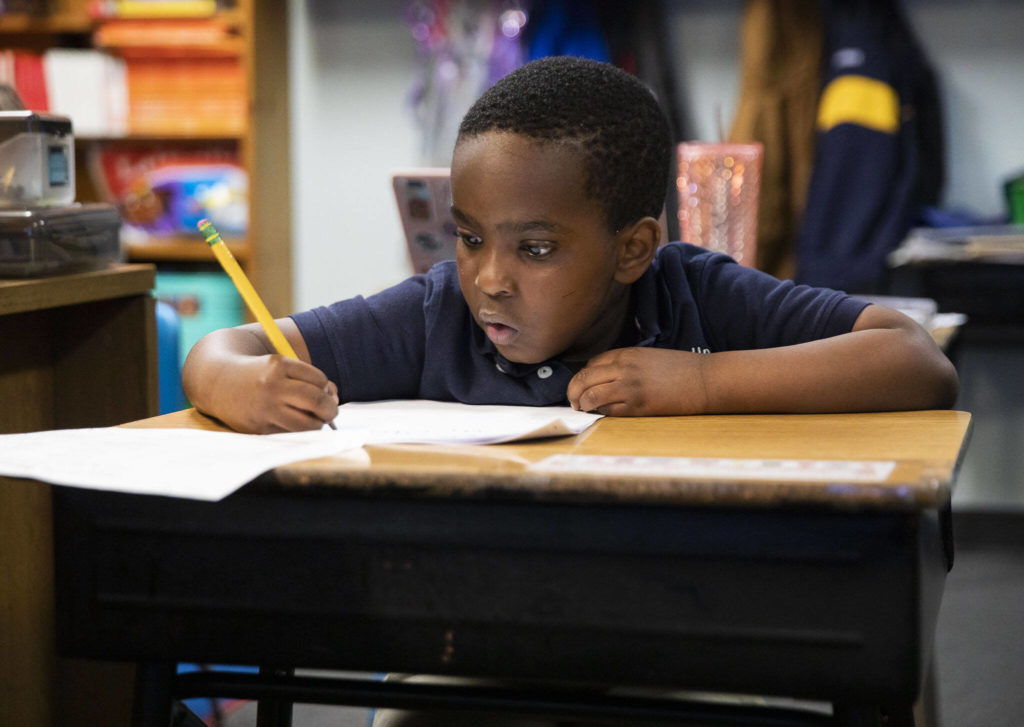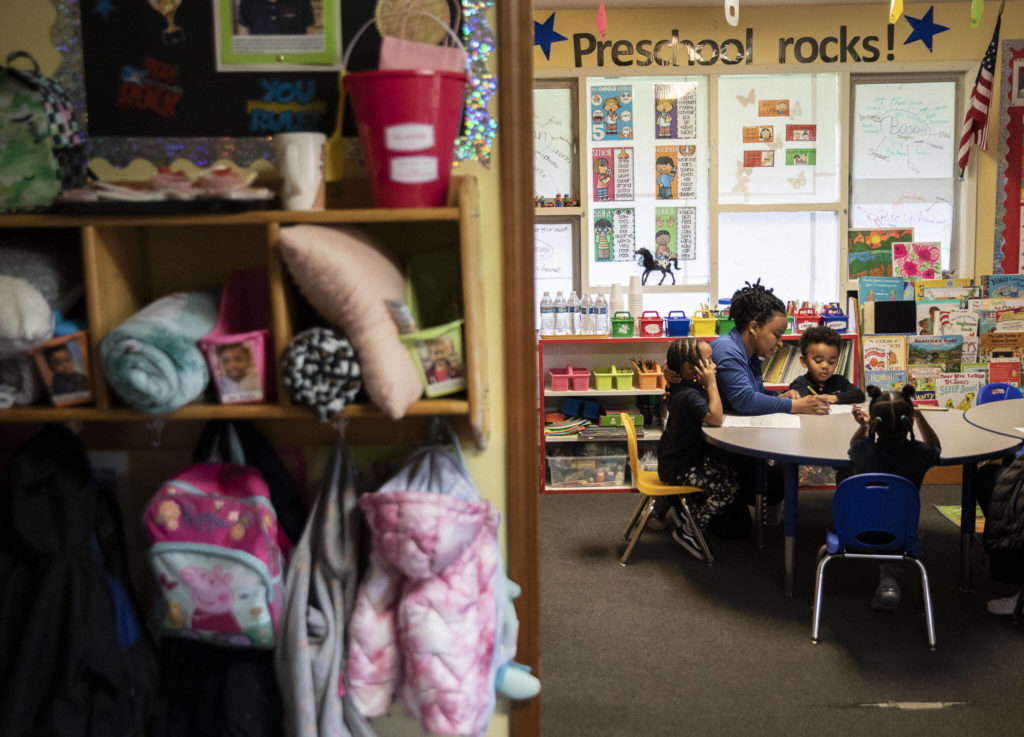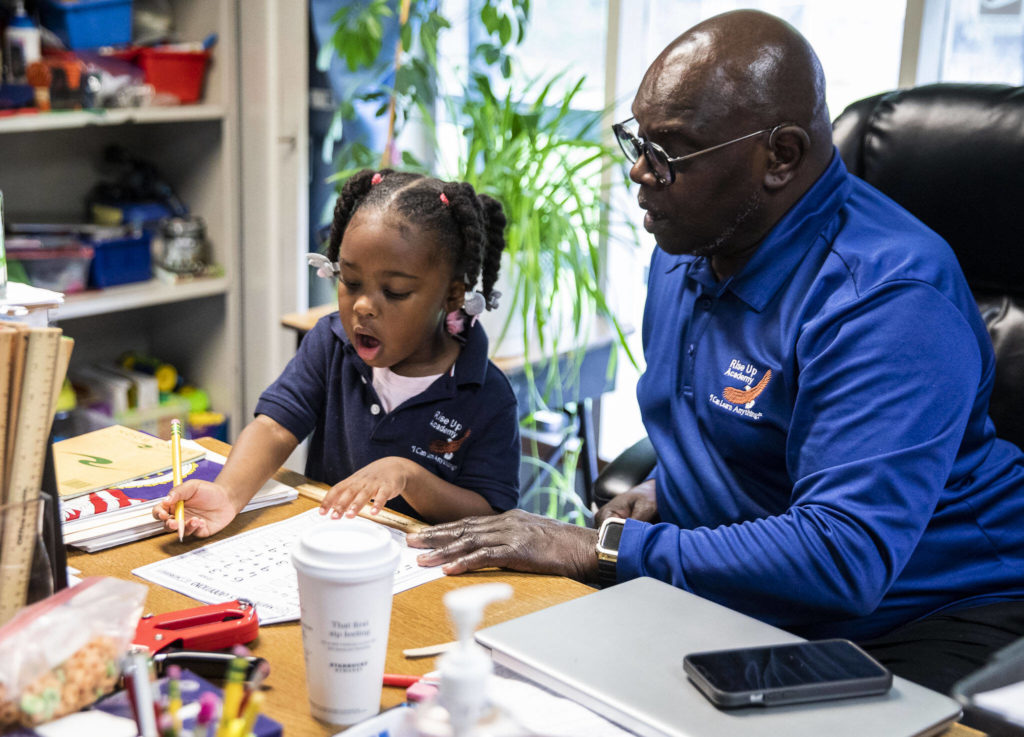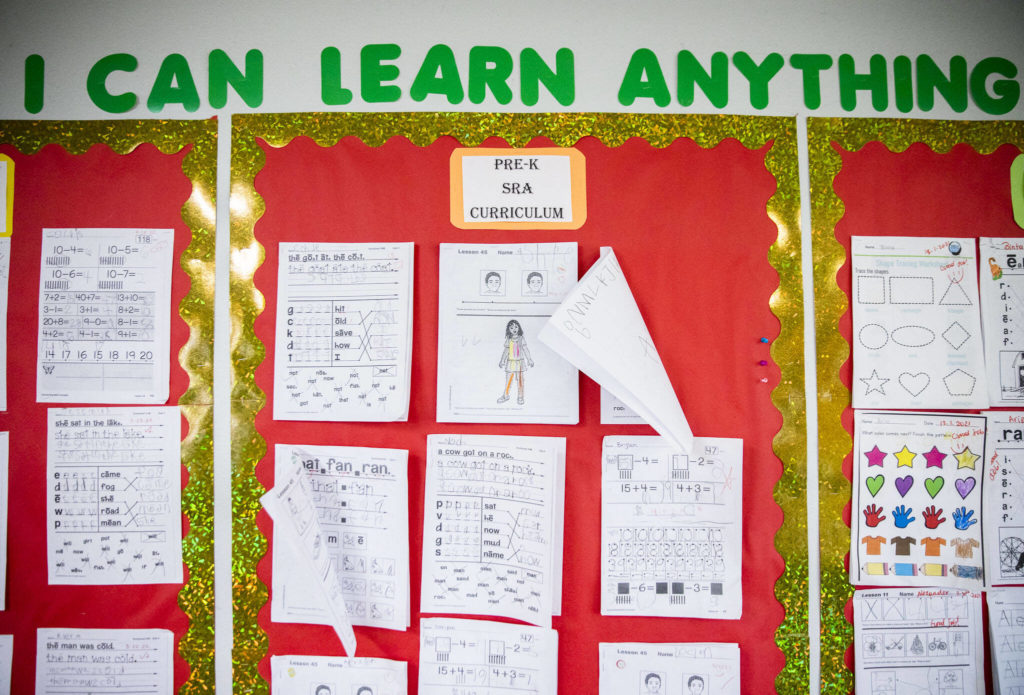EVERETT — In the back of Greater Trinity Academy is a picture of a 5-year-old girl reading to Bill Gates Sr.
Gates looks a little surprised, but impressed, as he watches her read a chapter book meant for third-grade students.
The girl represents the academy’s motto, Rev. Paul A. Stoot said: “I can learn anything.”
“Statistics have already labeled you, before you came to us, that you will not amount to much, nor will you be ready for third grade,” said Stoot, founder and executive director of Greater Trinity Academy. “We teach that 2-, 3- or 4-year-old that they can learn anything.”
The academy is somewhat of an anomaly. Its origin story, financial status and approach to education differ wildly from other early learning centers. Stoot said the results are undeniable, though. Many children who struggle in daycare thrive at the academy.
“They aren’t just here to play and color,” Director Kate West said. “They do that because you learn through those activities, but it’s a curriculum-based, education-based program from day one.”
Stoot, a former Boeing engineer, founded the academy in 1999 with Pro Football Hall of Fame strong safety Kenny Easley, of the Seattle Seahawks. They wanted to help children whose parents couldn’t afford pre-K. The nonprofit school built and enhanced its programs through grants and donations. The money helps the school hire more staff, lowering its student-to-teacher ratio.
The nonprofit school’s early learning program accepts students as young as age 2. By the time students enter elementary school, staff said, they’re often ready — at least academically — for second or third grade.
Stoot said it’s due to the academy’s small class sizes and a meticulous staff, who believe in “teaching through the trauma.” The children’s emotional and social development matters as much as the academics, he said.
Nearly all of the students come from low-income households. Some are homeless. About 5% to 10% are in foster care or live with their grandparents.
“Some have been kicked out of two or three different daycares,” Stoot said. “… We figure out how to really tackle the trauma that their child is trying to express.”
Assistant Director and Program Supervisor Joan Litzkow said the teachers help children learn coping skills in the classroom.
“It’s really trying to help those kids understand strategies you can use when you’re feeling out of control,” Litzkow said. “What are some strategies to give yourself 10 seconds before you want to make a bad choice? … It doesn’t mean that our kids don’t ever have meltdowns, but we keep working through those and help them have the skills to work through those on their own, too.”
Litzkow previously taught at Woodside Elementary School south of Mill Creek, where many families struggled with poverty or homelessness.
“Those kids typically never catch up,” Litzkow said. “… It’s jaw-dropping for me to come to a program like this and see what these kids are learning and where they are (academically) when they leave.”
Curriculum Specialist and Kindergarten teacher Terry Metcalf joined the academy 11 years ago. Metcalf is a former NFL running back who went to three Pro Bowls, in six seasons spent mostly with the St. Louis Cardinals (now known as the Arizona Cardinals).
“In order to learn, you have to take a risk,” Metcalf said. “We teach our children how to take risks.”
The academy’s early learning programs are split into three classes: Preschool, Kindergarten Readiness and Advanced Kindergarten. The classes learn the same subjects at the same time, but in different rooms. It allows students to switch classes based on their skill level in each subject.
“It helps motivate and encourage the children to do the best they can,” Metcalf said. “… Children have to be challenged or there are going to be problems. It doesn’t matter if it’s reading, math, science.”
If a student needs more time with a lesson, they receive more support or switch rooms for that class period. Students don’t learn new lessons until they understand the previous one.
The academy’s curriculum requires a consistent teaching style, Metcalf said. The consistency between grades helps students move at their own pace. The teachers don’t hold back students who are ready to learn the next skill.
“I think, too many times in this country, we put children in a box because of their age,” Metcalf said. “We shouldn’t hold children back because of their age. We should motivate and promote based on skillset.”
Delvonne Sims recently became a kindergarten teacher at the academy. She pulled her 3-year-old daughter out of daycare to enroll her in the academy.
“She’s been here a month now,” Sims said. “She’s actually doing letter sounds, so I can only imagine in the next month she’ll probably be reading. Once she puts those letter sounds together, she’ll be able to read out an entire word.”
Katie Hayes: katie.hayes@heraldnet.com; Twitter: @misskatiehayes.
Katie Hayes is a Report for America corps member and writes about issues that affect the working class for The Daily Herald.
Talk to us
> Give us your news tips.
> Send us a letter to the editor.
> More Herald contact information.
